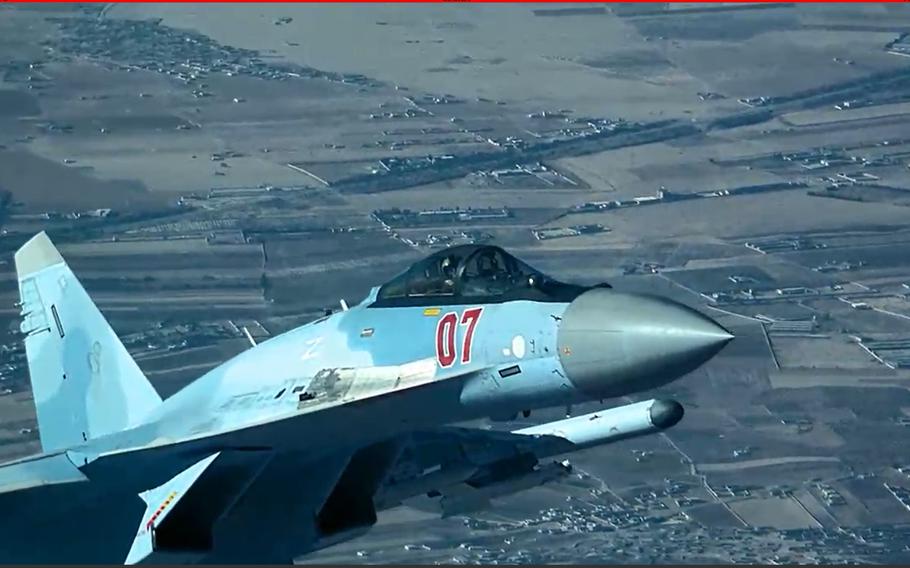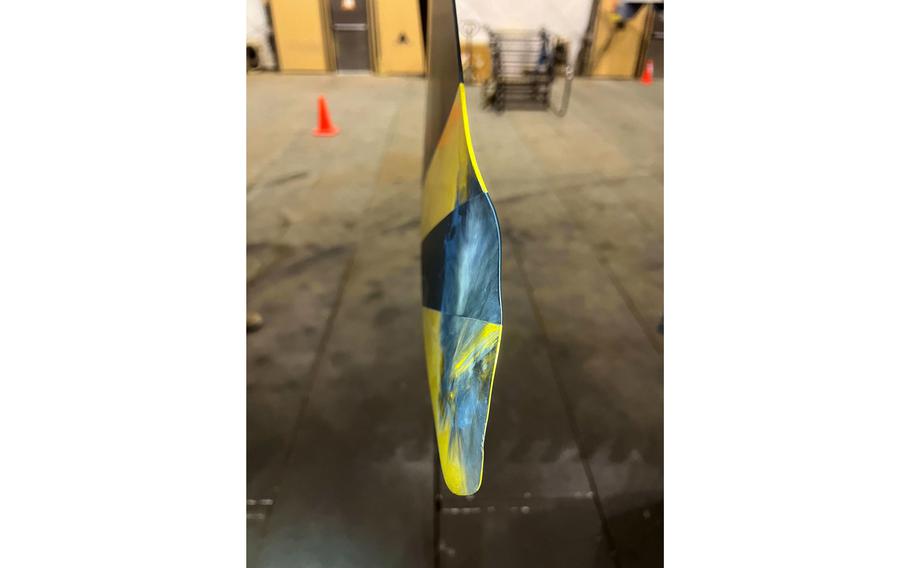A Russian fighter jet in Syria flying at close range fired flares at a U.S. drone and “severely damaged” its propeller, the Air Force said in a statement Tuesday.
The Reaper MQ-9 aircraft was able to be flown back to its base following the harassment early Sunday morning, the U.S. Air Forces Central statement said.
Footage released Tuesday by the Air Force appears to show an Su-35 Russian fighter jet approaching the drone before flying ahead of it and releasing several flares.
The chief U.S. Air Force commander for the Middle East on Tuesday accused Russian forces of “blatant disregard,” echoing complaints over the last year of harassment of U.S. aircraft in the region.

A Russian fighter plane flies close to a U.S. MQ-9 Reaper drone in Syria on July 23, 2023, in an image released by the U.S. Air Force. Flares launched by the jet struck the drone, severely damaging its propeller. Despite the damage, the aircraft was able to return to base. (U.S. Air Force)
“We call upon the Russian forces in Syria to put an immediate end to this reckless, unprovoked and unprofessional behavior,” Lt. Gen. Alex Grynkewich, head of U.S. Air Forces Central, said Tuesday.
Since late February, fighter jets and surveillance drones from Russia have buzzed U.S. bases in Syria and violated protocols that were developed to prevent fighting between American and Russian forces, Grynkewich told Stars and Stripes in June.
These flights risk “unintended escalation and miscalculation,” said Army Gen. Michael Kurilla, head of Central Command, on Tuesday.
Russian and U.S. forces are in Syria with the declared mission to fight the Islamic State group. Their backing of opposing armed groups in Syria has led to deconfliction protocols meant to avoid a direct conflict.
Under the protocols, Russian and U.S. troops are supposed to notify each other prior to transiting certain areas. U.S. complaints about violations by Russia have been increasingly ignored, Grynkewich said in June.
Russian military leaders, meanwhile, accuse U.S. pilots of violating agreements that separate Syria’s airspace, the Saudi Arabia-based Al Arabiya English reported June 1.
The Pentagon in June accused Russia of 85 protocol violations since March 1, including 26 flights over U.S. bases by armed and loaded aircraft.

The damaged propeller of a U.S. MQ-9 Reaper drone is shown after a Russian fighter jet in Syria launched flares, which struck the drone July 23, 2023, the U.S. Air Force said. The Reaper made it back to its base. (U.S. Air Force)
Last week, the Air Force said a Russian Su-35 fighter jet had cut in front of a U.S. MC-12 turboprop surveillance plane, risking the lives of the four crew members, who were forced to fly through the jet’s turbulent wake.
Grynkewich in June attributed the uptick in aerial aggression to the personal motivations of some Russian officers. He noted that Moscow gave awards to the pilots of an Su-27 fighter jet that caused a U.S. MQ-9 Reaper drone to crash into the Black Sea in March.
The U.S. has roughly 900 troops in Syria, according to the Pentagon. These troops, along with contractors, work with Kurdish fighters to battle the remnants of ISIS.
Russia is a staunch backer of Syrian President Bashar Assad and a partner with Iran. Both countries seek to drive U.S. troops from the region, analysts have said.